The host is a plant, ideally suitable for shady gardens. The host is even called the "queen shadow". The perennial fascinates at first glance not with its colors, but leaves. There is a huge number of host varieties that differ in the shape, colorful and size of the leaves. In this article we learn whether it is possible to grow a host in the complex climatic conditions of the Urals.
Host in the Urals - Botanical Description
- Host - a perennial grassy plant belonging to the Sparazhev family. The second host host - Funkiya.
- Homeland hosts consider Japan, Southeast Asia, the Far East.
- The host grows in the form of a large socket resembling a bush.
- The root host system is represented by a thickened root of a small size, from which a large amount of filamentous roots depart.
- The dimensions of the plant depend on the variety. Some types of hosts reach only 20 cm in diameter, while others are 100 cm. The hosts are capable of reaching 50 cm in height.
- Voronchen-shaped hosts are very similar to lilies flowers. They bloom on long blooms capable of reaching 120 cm long, and can be painted from white to lilac. Flowers are not carried by special decorative value.
- The decorative value of the host attached its leaves. They can be salad, green, dark green, gray-gray, gray, with contrasting white stripes or edging. Hosts leaves can also be narrow or wide, heart-shaped. Depending on the variety, the surface of the leaves of this perennial can be brilliant or completely matte.
- The fruit of the host is a box with a leathery and flat dark seeds inside.
Host in the Urals - Photo
Hosts Varieties for Urals
Types of hosts for the Urals
More than 20 types of hosts are known. Consider some of them:
- host White Caymleen. The plant reaches about 20 cm in height and 70 cm in diameter. Wide hostess leaves about 15 cm formed a beautiful outlet. The hosts of this type are blooming with lilac-purple flowers, which are located on thin blooms with a length of about 30 cm. The plant prefers to grow in a half sense, is very unpretentious and resistant to adverse environmental conditions. The species received such a name due to the spectacular light edging of the leaves;
- host Zibold. A distinctive feature of this type of host is a scary color of the leaves, which is most beautifully manifested in a half. If the plant is planted in a sunny place, then the leaves will acquire an ordinary green color. The surface of the core of the cores of the hostesses of Zibolda matte. The flowers are very short, they can not even notice among the lush outlet. Flowers are small, painted in white-lilac color;
- host bloated. Perennials of this species prefer to grow on shady areas with wet soil. It is under such conditions that the host is capable of reaching about 80 cm in diameter. In the height, the plant also reaches 70-80 cm. With the beginning of the host flowering period, a powerful color sector is up to 100 cm long. Blossom continues for about 20 days. The leaves in the plant have a green color and a heart-shaped form;
- host Lancetoliste. The plant grows up to 40 cm in height and forms a lush rosette with a diameter of about 60 cm. A distinctive feature of this type of host is the form of leaves. They are rather narrow - about 8 cm in width and 18 cm long. The flowering period occurs at the end of the summer and lasts about 2 weeks. Purple bell colors bloom on thin bluers up to 60 cm long;
- host wavy. The homeland of this kind of host is Japan. The plant differs in compact dimensions - up to 30 cm in height and up to 20 cm in diameter. Compared to other types of the host, the wavy has not a tight outlet. The leaves have a wavy surface and a slightly folded tip. The flowering period occurs at the end of summer. The host forms a flowerp to 80 cm in length, on which small funnel -ide purple flowers with wavy edges are located;
- host plantain. The hosts of this species are distinguished by beautiful heart-shaped leaves reaching 30 cm long and 10 cm in width. The surface of the leaf is brilliant, painted in a green color. Blossom lasts about 2 weeks at the end of summer. Snow-white flowers bloom in high blooms;
- the host is straightforward. The birthplace of this kind of hosts consider the eastern regions of Russia and Japan. The rosette of the plant is formed from almost vertically growing leaves. On the flowers are blooming quite beautiful funnel-shaped colors of a saturated lilac color. The host is straightforward - one of those varieties of host, which prefer to grow not in complete shadow;
- host decorative. This plant also came to our culture from Japan. The leaves of this host are shiny below, and on top of matte. Most varieties of this species have a contrasting white edging on the leaves, but some of the forms have a monophonic green color of the leaves. The advantage of the host is decorative is its frost resistance and resistance to diseases, pests, unfavorable environmental conditions. The approximate diameter of the socket is 60-70 cm.
Hosti varieties
If you are going to put the host in the Urals, then definitely pay attention to the degree of frost resistance of the variety. Consider the most popular Hosts varieties at the Ural Dachnikov:
- Gold Standart. - Beautiful variety of hosts with an unusually thick and lush rosette up to 100-120 cm in diameter. The leaves have a heart-shaped, oval or rounded form. The plant changes its color depending on the season. In the spring, gentle-salad leaves, and in the fall of their middle acquire an interesting yellowish tint, which is effectively combined with a dark green edge. The variety is known for the high degree of winter hardiness, does not require shelter for the winter;
- Abiqua Drinking Gourd is a frost-resistant host variety that is popular among gardeners. Plant has unusually decorative leaves. They have a practically a spherical large form, a nine color and a textured surface. The socket reaches 100-110 cm in diameter, and in height - 50-60 cm. The host prefers to grow in shady forests and in wet soil;
- American Halo. - Frost-resistant Hosts grade, forming a rosette of leaves to 120 cm in diameter and up to 80 cm in height. Hosts have a very beautiful coloring - a dark green middle and light-salad edge. The host of this variety can be equally successfully growing both in full shadow and with scattered sunlight. On too illuminated areas on the leaves of the plant can appear solar burns;
- Fragrant Blue. - Decorative hosts, which can be grown in the conditions of the Urals, but requires shelter for the winter. This hybrid host variety was led in 1988. The plant grows up to 40 cm in height and has a diameter of about 60 cm. Oval, heart-shaped or even rounded chost leaves can have a gray-gray, gray-blue, gray-green shade. The variety prefers rafting in half-walled places on the moistened soil, can take out a complete shadow;
- CANADIAN BLUE.. This perennial herbaceous plant forms a leaf outlet with a height of up to 60 cm and up to 80 cm in diameter. The leaves of the hosts are painted into a spectacular blue shade, which gives the plant a high decorative value. The variety of frost-resistant, preferring to grow in the shadow or semoligible in the moistened soil;
- Blue Mouse Ears. This variety with a very interesting name "Blue Mouse Ears" was led in 2000. Sheetting rosette reaches only 30-35 cm in diameter. The host is great for group, single landings, for growing in decorative containers. The advantage of the variety is its high frost resistance, which allows the growing plants in the climatic conditions of the Urals;
- Cherry Berry -.. Undersized frost variety hosts, reaching a height of 30 cm in diameter leaves the outlet is up to 90 cm distinctive feature of this variety is the color of leaves, which combines the two contrasting colors - practically snowy middle sheet and green edging. For more ornamental plants give red flower stalks on which the flowers bloom purple;
- Guacamole. Grade frost hosts with a compact leaf rosette reaches a height of 60 cm, in diameter - 70-80 cm Leaves dense plants, with lighter green core and darker green edges.. On the sheet surface can be seen a clear venation. By the end of the growing season middle sheet becomes yellow. Host can grow in full shade, and the portion with diffused sunlight;
- June - frost resistant cultivar hosts, which is great for growing in the Urals. Leaves of the plant are heart-shaped form and a unique 3-color color. The middle plate has a light yellow color, closer to the edges of the sheet is colored dark green color, and fringing sheet has sizuyu, bluish color. The plant has a very compact form - 70 cm in height and 70-80 cm in diameter;
Landing hosts the Urals
Choosing a place to land hosts the Urals
When choosing a site for planting the hosts in the Urals should be guided by the characteristics of the variety. Some species prefer to grow only in the shade, and other plants very enjoyable and useful scattered sunlight. Consider the general guidelines for the selection of the area a place to land, "the shadow of the Queen":
- grade hosts with blue-gray, green leaves, as a rule, are shade-tolerant and shade-loving, even. For these grades, choose a place on the north side of the garden under the shade of trees, tall buildings, dense shrubs, etc. If plants with similar colored leaves to put on too lit place, then the host can get sunburn, and unusual blue-gray, the blue color of the leaves turn green;
- grade hosts a motley leaves often prefer to receive occasional sun. For example, you can choose a site that will be covered only in the morning and evening, and all the rest of the day will be dominated by the shadow;
- hosts varieties with thin leaves, as a rule, will feel bad too lit area. But plants with thick, leathery leaves are quite happy with short sun baths.
As you already understood, when choosing a place to land the hosts in the Urals, it is necessary to be guided by the characteristics of the grade that you are going to perch.
We choose the soil for landing the host in the Urals
- Avoid landing the host on too sandy land. Water in such a soil "leaves" very quickly, and the host will not show itself in all its glory.
- The hosts are not very love to grow on wetlands, heavy clay soils.
- For the landing of the host in the Urals, well-drained loams rich in rainworms and other microorganisms will be ideal.
- The host positively refers to the soil, which is well enriched with organic.
- The optimal acidity of the soil for the landing of the host - 6.5-7.5.
- Almost all varieties of hosts that are suitable for cultivation in the Urals, they love moistened soil, but not wetlands.
We choose the hostess landing material for the Urals
If you decide to plant a host in your area, the success of this event will directly depend on the quality of the planting material. Whatever the right place you have chosen, no matter how well you have prepared the soil, a bad landing material ruptures everything. Be sure to get acquainted with the following tips on the selection of landing material.
- If you decide to order a host through an online store, then choose exceptionally proven major sites that sell plants for growing in your area.
- When buying a host, be sure to inspect its root system. It should not have any mechanical damage, to be drained, disgusting, etc. Roots should be strong, healthy, elastic.
- It is better to buy rhizomes of hosts with sleeping leaf kidney. If the plants already have an unfolded leaflets, then it will be worried about a new place, it will be much heavier. Although on store shelves, you can find copies in pots with beautiful deployed leaves. Experienced Gardeners of the Urals are still recommended to buy host rhizomes without leaves.
- If the planting material is purchased, but the landing time has not yet come, you can easily save it. To do this, you need to choose a cool and dark place. You can place rhizomes on the lower shelf of the refrigerator in the package with peat, remove to the basement. Some gardeners even retain host rhizomes in a snowdrift. To do this, it is necessary to put the plant at the earth itself, fall asleep with sawdust or sand, and then build a snowy snowdrift on top.
Choose time for landing hosts in the Urals
Hosts can be planted both in spring and autumn. In the fall, these plants need to have time to plant until the end of September, to give them the opportunity to be normally rooted before the arrival of frosts. In the climatic conditions of the Urals, gardeners prefer the spring landing. The exact time of the landing of the host in the Urals will depend on climatic conditions at a specific time. It is important that the frosts have passed, and a warm spring weather has been established. In order for the root system to take root, you need about 1 month. During this time, you need to follow the humidity of the soil, not allow drying.
Host planting technology in the Urals
- Before boarding again, inspect the planting material for the presence of rot. If such places were found, they need to be cleaned and smeared with green. If the roots dried, they can be soaked for a couple of hours in warm water.
- Now proceed to the preparation of the landing pit. Its dimensions depend on the size of the root. Consider that the roots of the hosts will grow in width. It is for this reason that the landing pit must be quite wide.
- After the pit is dug, proceed to the preparation of nutritional soil to fill it. Mix ordinary garden ground with leaf ground, humus or compost, with peat. If the soil is heavy, then add some sand. If the soil on your area is acidic, then add some lime, as the hosts prefer to grow on neutral or weakly acidic soils.
- Nutrient soil fill the landing pit on 2/3 of the part.
- Be sure to water the landing pit.
- Put in the center of the pit of the host, carefully painting her roots in a circle.
- Hold the plant with one hand, and then fall asleep the pit, slightly tamping the soil.
- The plant after landing should be pouring, then check the level of the soil. If he sank, then split it.
- In order to protect the host from moisture loss, be sure to inspire the soil surface with peat. You can also be cluttered with a coarse material - sawdust or woody crust. This will serve as an excellent test of host protection from soft pests.
CARE FOR THE HOSE IN THE URAL
Watering the hosts in the Urals
Host - a plant preferring to grow on moistened soils. If the weather is hot, there is no rain for a long time, then be sure to check the soil moisture around the host. In the climatic conditions of the Urals, it is not necessary to allow the convergence, since the root system may suffer. When watering, it is necessary to ensure that the water does not get into the leaf outlet, Leite only under the root.
Web Hosts in the Urals
Deleting weeds - a mandatory care element not only for the host, but also for other perennials in the garden. The advantage of this plant is that it practically does not give the opportunity to grow weeds. This greatly facilitates the care of the plant. To maintain the aesthetic type of host, it should also be timely removed by the blurred inflorescences and dry flowers.
Ruffle hosts in the Urals
Periodic loosening of the soil around the host allows you to provide the best oxygen access to the root system of the plant. But it is necessary to spend it very carefully, so as not to hurt the roots of the host, since they are located quite close to the surface of the earth. Some gardeners refuse loosening, replacing it on mulching.
Mulching hosts in the Urals
Host mulching is better to produce immediately after its landing. As a mulch, you can use peat, sawdust or crushed wood bark. The layer of the mulching layer should be at least 1-2 cm. Mulching helps to solve the following tasks:
- slow down the evaporation of moisture from the soil;
- prevent the growth of weary grass;
- rough mulch from sawdust and cortex will protect the host from the slug - one of the most important pests of this perennial.
Feeding hosts in the Urals
The host can be perfectly done without feeding. But on too poor plot, the plant is still possible to periodically feed. Gardeners of the Urals are recommended to produce hosts in 3 stages.
- during the start of spring growth;
- during the formation of flowerons with buds;
- after the end of the flowering period.
What to feed the host? You can purchase a comprehensive mineral-organic fertilizer in a specialized store and apply it strictly according to the instructions. You can also deposit the infusion of a cowboy under plants, which can also add superphosphate, potassium sulfate, ammonium nitrate. When feeding the host with mineral fertilizers, which are better to bring after irrigation or after rain, be sure to make the granules to fall on the leaf outlet. The last feeder for the host is brought from the second half of July to half of August. Excessive consumption by plant of nutrients in the fall can provoke the growth of new leaves, which is undesirable before wintering. In the fall, only the mulching of the organic is allowed.
Host preparation for winter in the Urals
Most varieties of hosts that are suitable for cultivation in the Urals have a high degree of frost resistance and do not require the shelter of rhizoma for the winter. But there are some varieties that preferably protect.
- After the end of flowering, be sure to remove flowers and flowers so that the plant does not spend their forces on the formation of seeds.
- Do not strengthen the host for the winter of her leaves. They may have various microorganisms, foci of diseases that can be ruined with a long-term contact in winter.
- It is better to cover the plant with a noodle, mulch with sawdust, peat.
- Purpose material for the host is desirable to undergo disinfection tobacco dust, phytoosporin-M.
- The preparation of the host by winter in the Urals lies in the reduction of watering and feeding.
- In the fall, the mulching of the earth's surface is allowed around the host host to protect the root system from possible freezing.
After melting snow in the spring, do not forget to treat the soil around the host to destroy the possible masonry of insect larva.
The reproduction of the host in the Urals
Breeding hosts in the Urals seeds
Seed method for breeding the host is not popular with summer residents. Plants grow very slowly, decorative qualities begin to manifest itself only for the 4-5th year after landing. In addition, the species characteristics of the host can be lost in this method of reproduction.
Breeding hosts in the Urals cuttings
The vegetative method of breeding the host is one of the most popular. Consider an exemplary algorithm for the reproduction of the host by the method of shifting:
- hosts cuttings can be harvested in the period from May to mid-July;
- as a cutlets, you need to choose a young small leaf with a heel;
- before rooting the cutting into the ground, you need to shorten his sheet on 2/3 of the part to reduce the evaporation of water;
- the cuttings are rooted in the nutritional soil, water and covered with a can or film;
- in the first few days, the cuttings may fall, seem to be faded. But after a while he must "come around";
- care of cuttings The host is in regular watering and periodic spraying.
The breeding of the host in the Urals division of the bush
The division of the host bush is also a rather popular and efficient way of reproduction. But note that some varieties of this decorative perennial are pretty hard to carry such a division. Plants can slow down the growth rates for a couple of years after such "interference" into the root system. The host technology of the host by dividing the bush is as follows:
- bring out the division of the bush of hosts in the Urals should be either in spring when the leaves have not yet begun to flashes, or in the fall after the end of the flowering period;
- pour the plant before digging it up;
- in order not to damage the root system, it is better to use garden forks to extract the plant from the soil;
- divide the host on as many parts as its dimensions allow. It is necessary that 1-2 leaf outlets are 1-2 in each of the parts;
- each of the parts of the host put in advance the prepared hole, which is abundantly shedding with water.
Diseases and pests of hosts in the Urals
Host is an amazing plant that is completely unpretentious in care. An additional "bonus" for gardeners is that the perennial is very rarely exposed to the invasion of pests or infection with diseases. But sometimes some insects can cause serious damage to hosts on the plot:
- slug. These insects are mercilessly eating the leaves of the host. Most often with them are struggling by folk methods. For example, you can argue around the host for the night of the tank with beer, and in the morning to assemble the pests manually. You can also mulch the ground around the host with an impellent egg shell, shells, wood sawdust. The sharp edges on the surface of such a mulch will become an irresistible barrier for soft pests;
- strong nematode. It is possible to notice the presence of such pests on the host on a wide brown "tracks" on the leaves. It is necessary to start saving the host with the removal of amazed leaves. Then it is advisable to dig a bush, process the root system with a weak solution of mangartee and plant a plant to a new place.
Among the diseases of the hosts can be noted as follows:
- gray rot. The symptoms of this disease at the host is the fading of the tips of the leaves. The affected parts of the plant must be removed, and then process the whole plant with a solution of bordeaux liquid;
- root rot. Signs of overall engagement of the host, the growth stop may be a consequence of this disease. The plant needs to dig, carefully inspect the root system, remove the fired sections, to process the rhizome solution of mangalling for disinfection. Then the plant is desirable to put on a new place;
- philosticosis - Host disease, which can be suspected of red or brown spots on the sheet plates. It is more effective to deal with such a paramount with modern means - ABIG peak, Vectra and others.
The host is very often called a plant for lazy. The thing is that this perennial is completely unprecedented in care. You only need to monitor the level of soil moisture and periodically examine the hosts to notice the symptoms of diseases or pests in time. The host will become a real decoration of the most unsightly dark corner of the garden, where most other decorative plants can grow. This plant is great for the design of the priority circles around the high trees, to create green "borders", for group and single fit on the flower beds. The plant is perfectly combined with ferns, geranium, bells, iris, heikhera, anemons, various coniferous plants. The host will decorate your garden pond, add sophistication to the rocky garden, perfectly sends wooden buildings, stone clips.

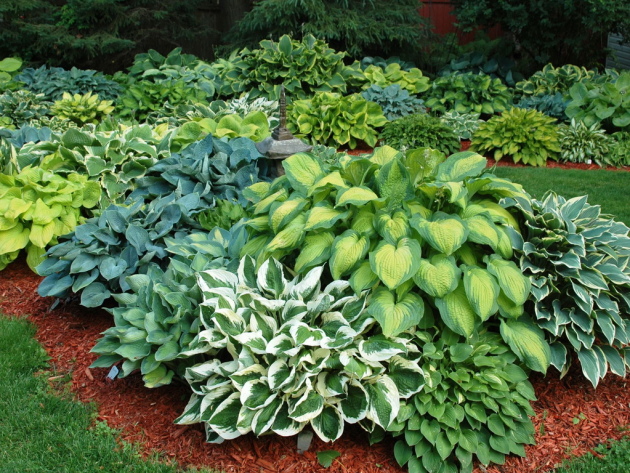
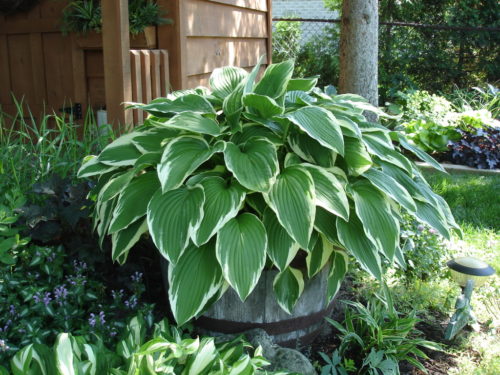

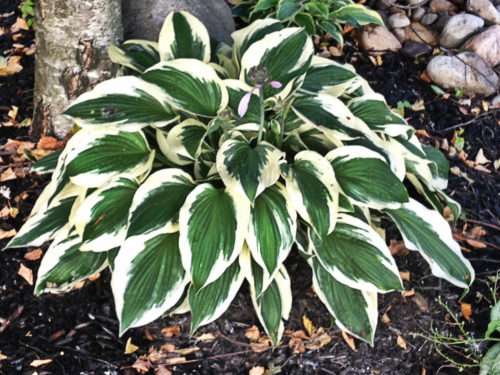


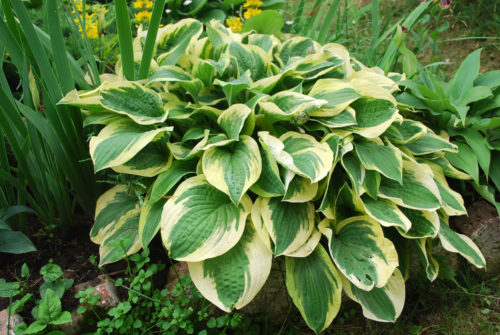
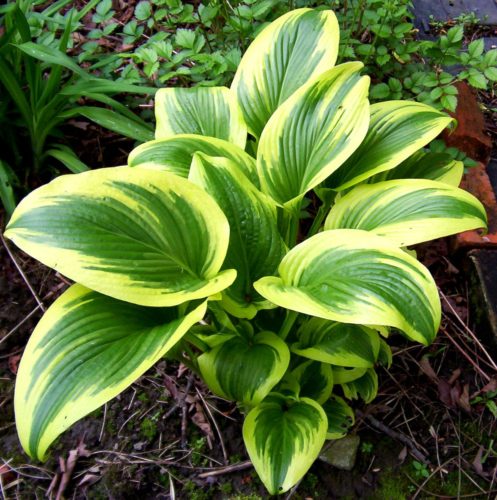
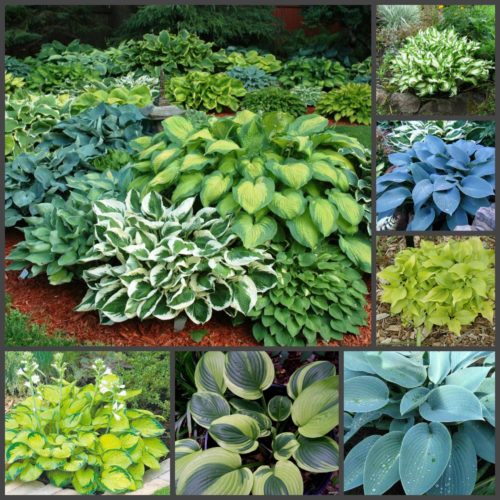
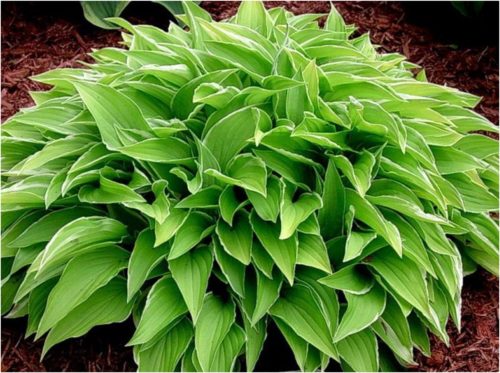

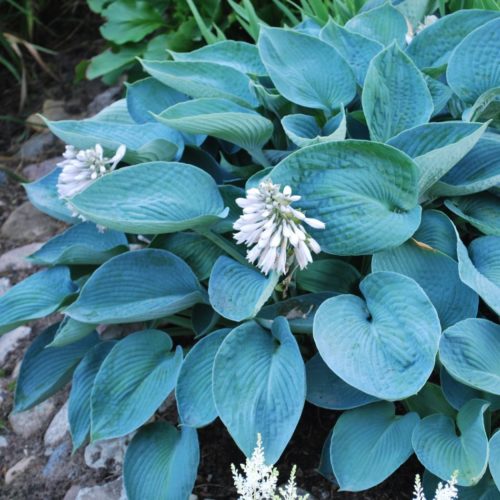
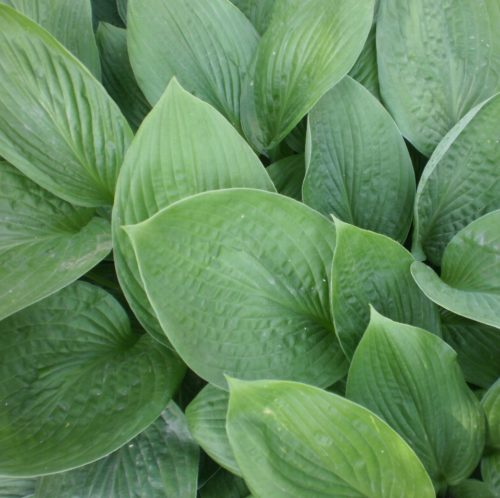
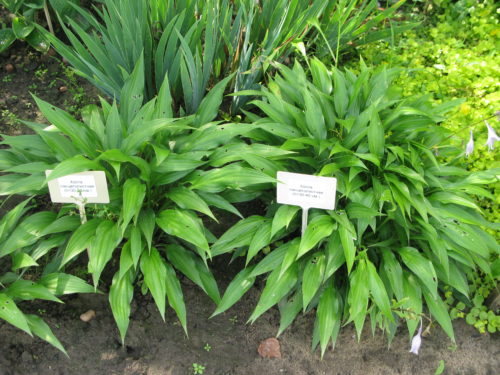


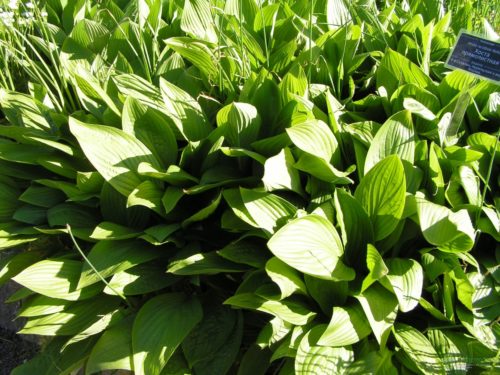
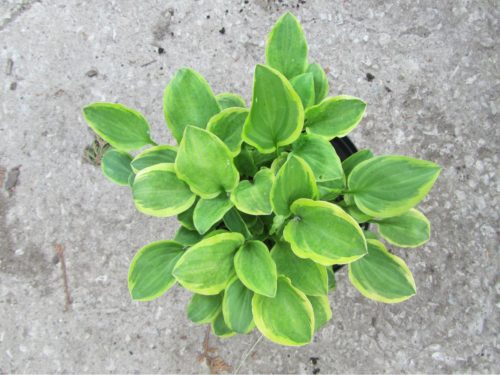


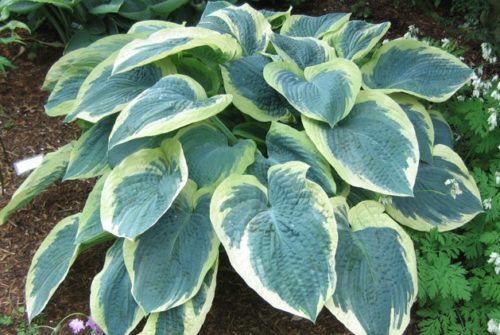
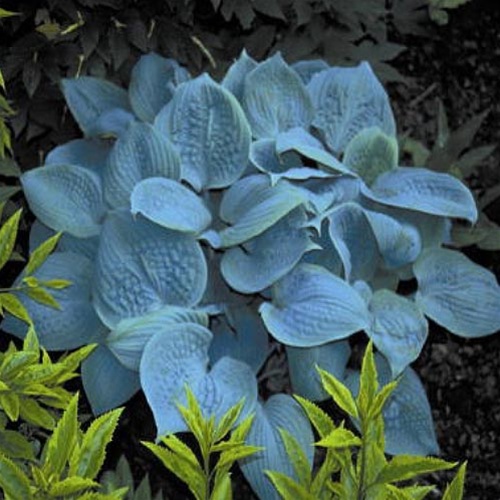
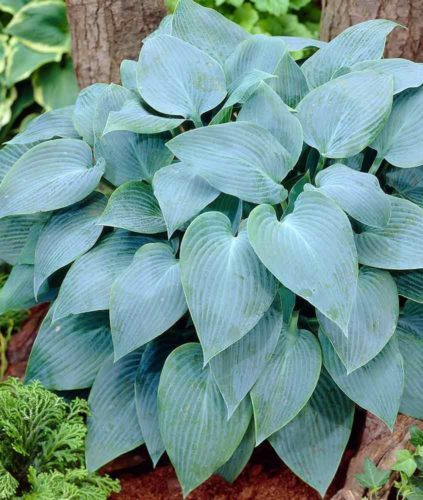
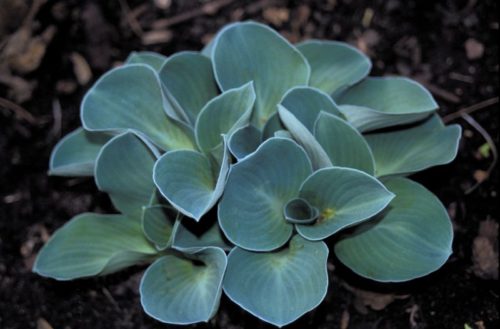

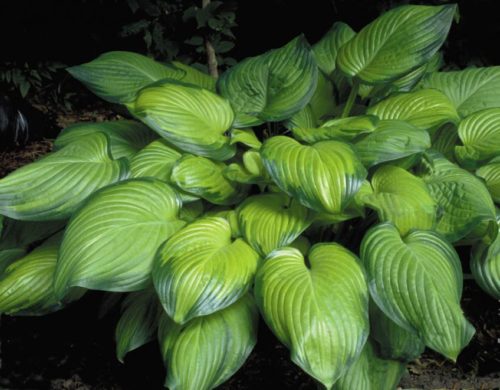

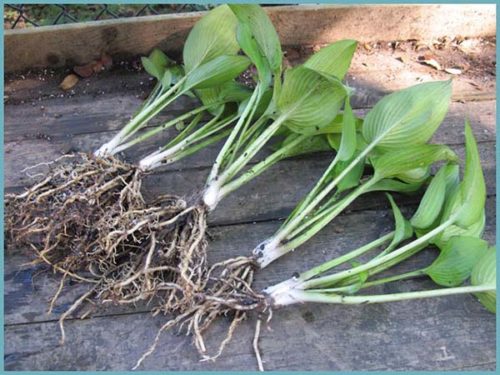
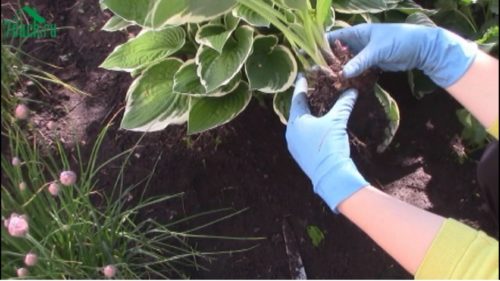
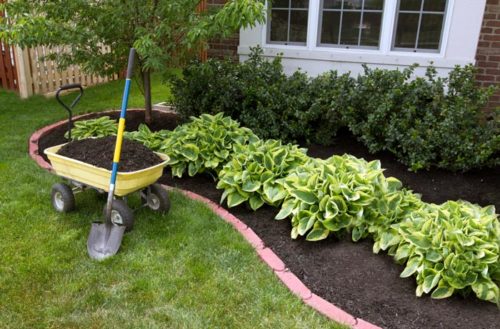
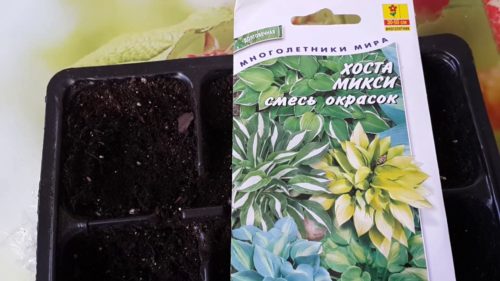
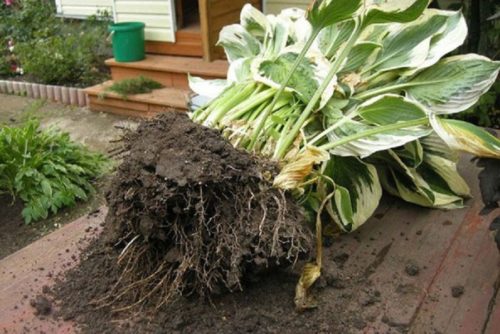

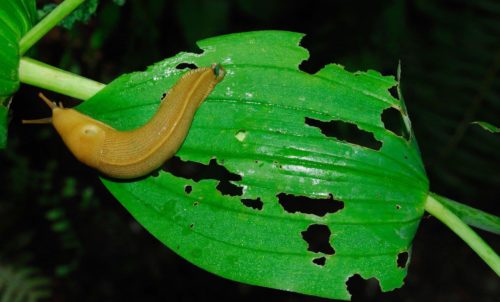












 Start a discussion ...
Start a discussion ...